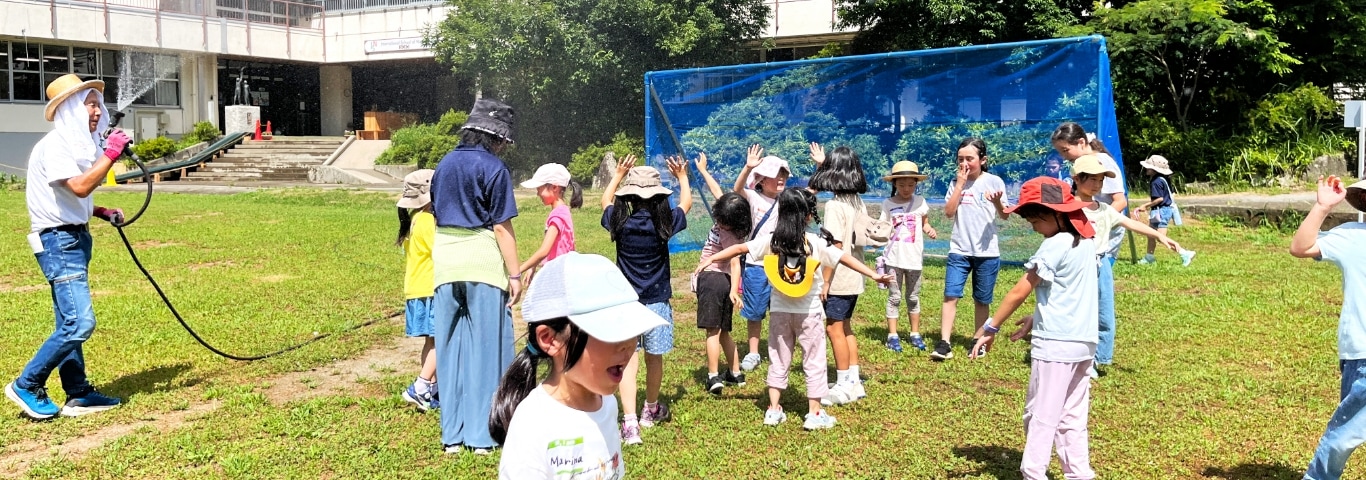答えは、ISNではテストをほとんどしていない、です。
代わりに、ISNでは「評価」が、毎日、毎週、毎ユニット、毎年、定期的に、継続的に、多角的に行われています。
まずは、ISNの評価は、以下の形として学びの証拠が残されています。
- ハードコピー (バインダー、ライティングブック、創作物、)
- オンラインデータ (ポスター、絵画、スライドショーなどビジュアルな活動。インタビュー、プレゼンテーション、スピーチ、ドラマ、会話の様子など口頭の活動。感想文、実験記録、研究報告書、ミニテストなど筆記型の活動。)
- 評価表: 学びへの意識や態度、理想とする学習者像への到達度、ユニットの理解、単科(読書き、算数、社会、理科、国語、体育、音楽…)の到達の様子などが、用紙で、年に2回ご家庭に届けられます。
ISNの評価の種類は大きく分けて
- Formative assessment 継続的な進度を計る方法 (毎日)と,
- Summative assessment 断片的な成長を見る方法 (1ユニットに数回、年に数回) があります。両方大事です。
どう評価する?
- 計画、実行、振り返りをユニットを通して、改善、改善、改善、の繰り返し。
誰が評価する?
- 生徒自身。さらにクラスメート、先生、家族の方が相対的に、話をしながら評価します。
評価基準は?
例えば5色のルーブリック。自分はどこにいるんだろう?
- 赤 – 取り組み始めたばかり。サポートが欲しい!
- 黄色 – 学んでいることについて、1つの例を挙げることが出来る。
- 緑 – 学んでいることについて、完全に理解して説明が出来る。
- 青 – 緑が出来て、この学びのコンセプトと、過去に学んだことをリンクすることが出来る。
- 紫 – 青が出来て、学びを実践するために、新しいもの、システムを発明する。オリジナルの発想で行動に移す。
何のための評価?
生徒のより良い学びのため。保護者ともコミュニケーションも、生徒の学びの記録としても、結局は生徒のより良い学びのためになることが一番の目的です。
The answer is that ISN mostly doesn’t do tests.
Instead of that, at ISN, “evaluation” is done every day, every week, every Unit of Inquiry, regularly and continuously. Listed below are some of the ways in which we evaluate the students.
Every student possesses a hard copy (their binder, writing notebook, drawings, craft etc.), online portfolio (any interactive or verbal activities, including posters, paintings, slideshows, interviews, oral presentations, conversations etc.) and evaluation report (containing information on the students, their understanding of the unit, attitude towards learning, writing/reading/math/japanese/social studies/science etc. proficiency). This is delivered to the parent twice a year.
The types of evaluation that ISN does are roughly divided into two categories: Formative assessment, which measures continuous, daily progress, and Summative assessment, which is measured several times per year and is an indicator of growth over a longer period of time. Both types are equally important.
How do we evaluate? Throughout the unit, the unit plan is created, executed, repeated and reviewed.
Who performs the evaluation? Students mainly evaluate themselves, through discussion with teachers, parents or classmates.
What is the criteria for the evaluation? There are many different forms of evaluation criteria, but a commonly used one is five colour rubric. For example:
Red – I’m just getting started. I need support. Yellow – I can come up with one example of what I have previously learned. Green – I can understand and explain what I am learning. I can start to link this to what I have learned in the past. Blue – I can fully explain what I have learned and can link it to what I have learned in the past. Purple – Blue is finished and I am coming up with new ideas and new ways of learning.
What is the purpose of evaluation? Improving the students learning through time by enabling them to reflect on and communicate their accomplishments and results.

